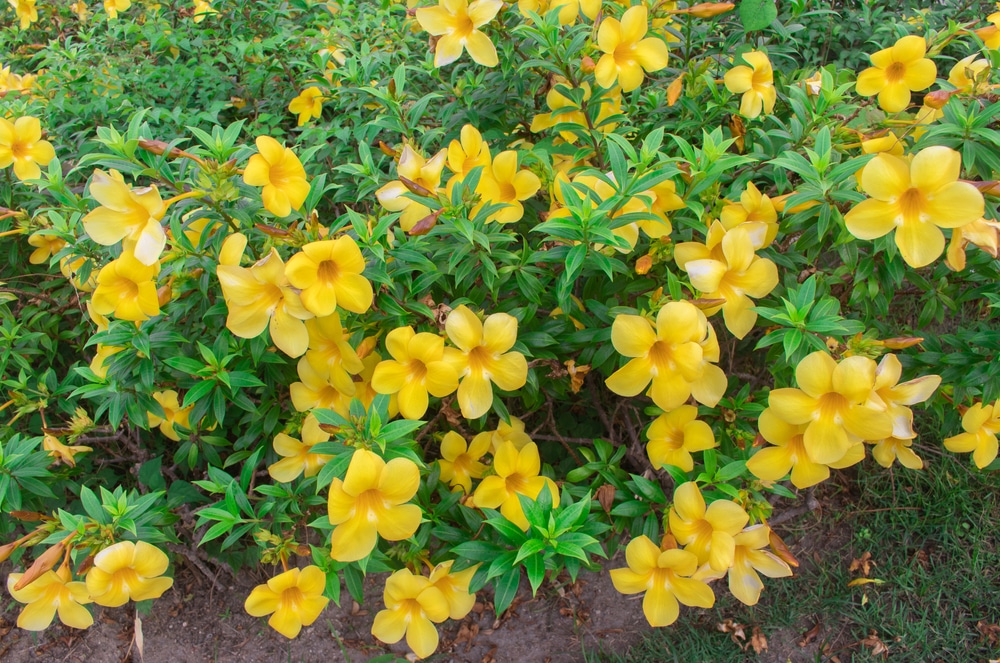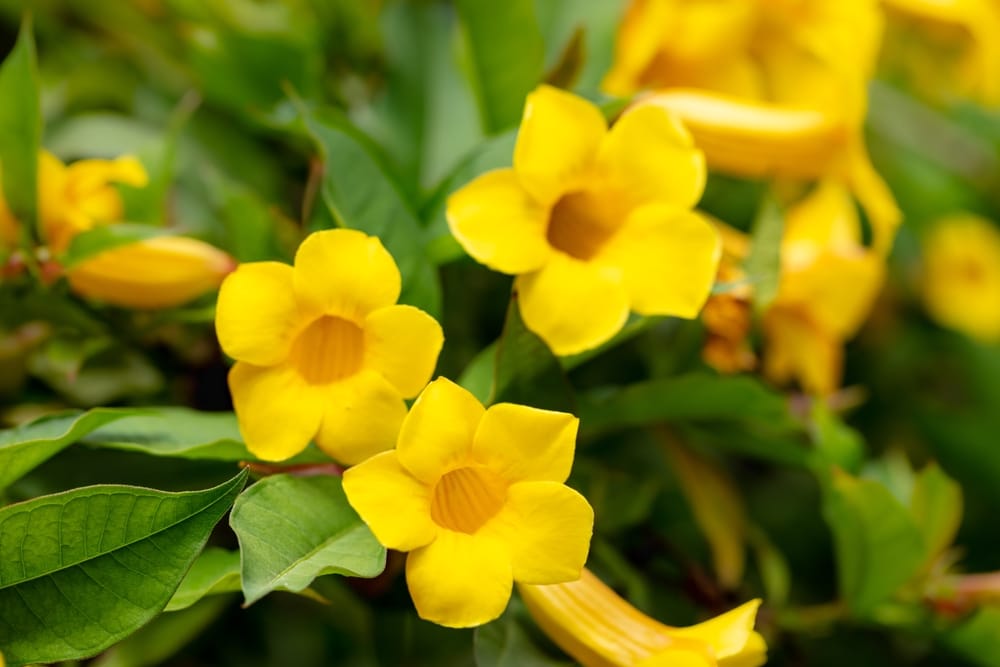The Allamanda Bush can be a lovely and environmentally friendly plant addition to any and all homes that have a suitable environment. Although this plant is pretty common it does have a few more particular requirements that you may not have been aware of. So, here is everything you need to know about the Allamanda Bush and how to care for it.
| Botanical Name | Allamanda schottii |
| Common Name | Golden trumpet |
| Plant Type | Perennial |
| Flower Color | A golden looking shade of yellow |
| Size When Mature | 96 inches in height |
| Bloom Time | Summer |
| Sun Requirements | Needs full exposure to the sunlight |
| USDA Hardiness Zones | 10 to 11 |
| Soil PH Range | 5.5 to 7.3 |
| Soil Type | Moist but well drained |
| Water Needs | Medium |
| Native Area | Brazil |
What you Need to Know About the Allamanda Bush
The Allamanda Schottii is a plant that is most commonly known as the Allamanda Bush. It is native to Brazil and can grow up to 98 inches / 8 feet in height.
How to Care for the Allamanda Bush
Here’s everything you need to know about growing and caring for a thriving Allamanda Bush
Light
The Allamanda Bush is actually quite particular when it comes to its sun requirements. This is because in order for it to properly grow and flourish, this plant requires pretty large amounts of direct exposure to the light. Therefore, the Allamanda Bush is not really capable of tolerating partial or full shade.
On the other hand, in its natural habitat, the Allamanda Bush usually grows nearer treetops in order to get all the sun it can while also keeping its leaves protected. Because of this, you may want to find an environment that allows the main parts of the plant to bask in sunlight while keeping its tips protected in the slightly cooler shade.
Water and Soil Needs
The Allamanda Bush loves water and requires it when temperatures go up. Furthermore, this plant needs the most water in the first year after initially being planted. It is recommended that you water the Allamanda Bush in the evening. Moreover, it is actually best if you water this plant twice a day, preferable at dawn and dusk.
In addition to this, the Allamanda Bush can grow to the best of its capabilities when the water it is benign given is rain water. This is because the Allamanda Bush is actually a bit sensitive to water that has more calcium loaded into it.
Moreover, the Allamanda Bush is not particularly picky about what type of soil it grows in. This means that it can grow well in clay, loamy, or possibly even acidic soil. Moreover, it can handle soil that has a pH ranging from approximately 5.5 to 7.3.
However, you must ensure that the soil that you provide this plant with is well draining as it cannot grow and flourish if its roots are constantly sitting in water.
Furthermore, the Allamanda Bush tends to do best when it is provided with soil that is fertile, moist that is plant based and high in nutrients.
Temperature Requirements

In addition to this, this plant does well in USDA Hardiness Zones 10 to 11.
Fertilizer
The best fertilizer to use on an Allamanda Bush is liquid water-soluble plant food. It is recommended that you fertilize this plant once a month during the chillier seasons and twice a month during the summer in order to encourage it to properly flourish and bloom.
Common Diseases
The only minor things that could possibly affect or harm the Allamanda Bush are aphids and spider mites. Both of these diseases are pretty easy to deal with and eliminate. All you have to do is wipe the plant’s foliage clean with some warm water and a gentle soap.
Allamanda Bush Spirea – final thoughts:
Overall, the Allamanda Bush is a beautiful and somewhat easy to take care of piece of greenery. This plant is likely to maintain its radiance and beauty for quite a while if all of the above requirements and recommendations are executed or at least taken into consideration.
You May Also Like: Do Bees Like Butterfly Bushes?

